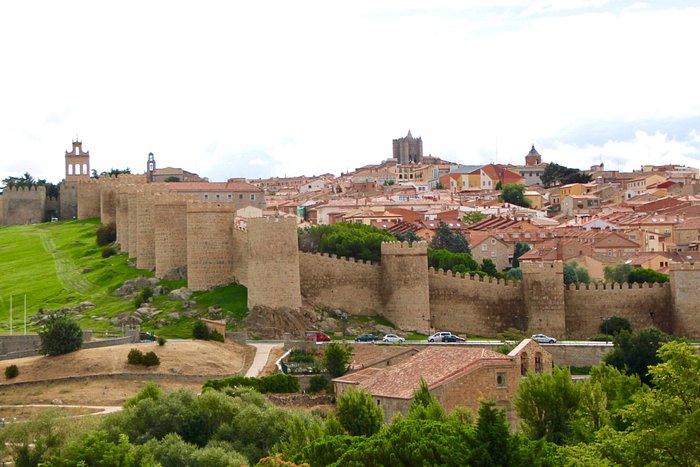Ávila - World Heritage City
Ávila is famous for its grand city walls which run for 2.5 kms and date from the 11th century
Declared a World Heritage Site in 1985, the mediaeval walled city of Ávila, 112 kilometres from Madrid in Castilla y León, is the highest provincial capital in Spain. Lying 1,130 metres above sea level, it can even provide some relief from the blazing summer sun in this part of Spain in the heat of August.

Turismo Ávila
Ávila is famed for its brown granite city walls, extending around the old part of the city for a distance of 2.5 kms, interspersed with 82 semi-circular towers and nine gateways. Still in excellent repair today, the construction began in the late 11th century during the Moorish occupation of Spain, when Christian forces were slowly pushing the Moors back down into the South of the peninsula.
Christian armies had had a number of successes South of the Duero, including the conquest of Toledo in 1085, and Alfonso VI of León (who also held the crown of Castile) ordered his son-in-law, Raimondo de Borgoña to repopulate Ávila to protect reclaimed Christian territory from the Moors.
Re-founded on the site of an ancient Roman fortress, it is believed construction of the fortress and towers was started in the late 11th century, with the perimeter itself erected during the second half of the 12th century. It’s an impressive sight and one of the best preserved enclosures in Europe, with an average thickness of three metres and a height of twelve, enclosing 33 hectares within its protective area.
Christian armies had had a number of successes South of the Duero, including the conquest of Toledo in 1085, and Alfonso VI of León (who also held the crown of Castile) ordered his son-in-law, Raimondo de Borgoña to repopulate Ávila to protect reclaimed Christian territory from the Moors.
Re-founded on the site of an ancient Roman fortress, it is believed construction of the fortress and towers was started in the late 11th century, with the perimeter itself erected during the second half of the 12th century. It’s an impressive sight and one of the best preserved enclosures in Europe, with an average thickness of three metres and a height of twelve, enclosing 33 hectares within its protective area.
The apse of the city’s gothic cathedral-fortress – built between the 12th and 14th centuries - is an integral part of the city walls, with, inside the building, clear evidence of the various periods in its construction, from Romanesque, to Gothic and Renaissance.
Ávila is also noted as the birthplace of Saint Teresa de Jesús, baptised as Teresa de Cepeda y Ahumada and now known as Teresa of Ávila, who was born here in 1515. A Carmelite nun, this great mystic worked as a reformer within the order for most of her life, and is one of only three female Doctors of the Roman Catholic Church.
She entered the order at the Convento de la Encarnación in Ávila, founded the Convento de San José in the city, and has dedicated to her the Convento de Santa Teresa, in the Plaza de Santa Teresa, built in 1636 on the site of the house where she was born.
Many palaces and mansions built inside the walls still stand today, including the Mansion of Velada, the Palace of Valderrábano, the Palace of Núñez Vela and, perhaps the most magnificent, the Palace of Dávila, a fortress made up of four houses built between the 13th and 16th centuries.
Ávila’s most grisly claim to fame, however, is as the burial place of Spain’s first Grand Inquisitor, Tomás de Torquemada, who lived the last years of his life in the Convento de Santo Tomás in Ávila, and was buried in its chapel in 1498.
https://www.avilaturismo.com/en/home/
